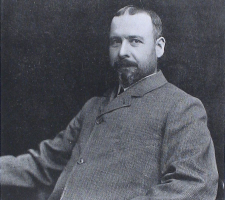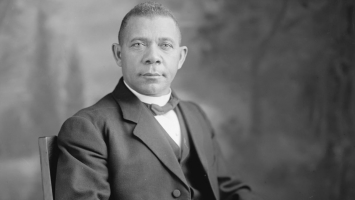Top 13 Interesting Facts About Joseph Stalin
There are interesting facts about Joseph Stalin that you may not know. If you just look at the picture of Joseph Stalin, you can see an old man smiling back at ... read more...you, but don't be fooled! Stalin killed millions of innocent people to claim power and prove his power. Because of his mass executions and brutal programs, many historians debate who was worse, Stalin or Hitler.
-
One of the interesting facts about Joseph Stalin is that he was a millionaire. The idea that everyone should be treated equally, regardless of occupation, social class, or background, is one of communism's central precepts. This entails having the same kind and size of the home, making the same salary, and so forth.
However, the handful who rule communist nations is frequently among the wealthiest leaders in the world. Stalin's the Soviet Union was no exception. Whatever Stalin said was followed since he was the Soviet Union's leader. Stalin frequently asserted personal ownership of the several mansions (mansions) dispersed throughout Russia that were considered his abode, even though they were state property.
On one occasion, Stalin even constructed a network of underground tunnels connecting his residences, which were only accessible to him. What a waste of equality. The Soviet industry, which currently accounts for 7.5 trillion dollars, was also completely under his control when he was the dictator.
Stalin was the richest politician of his era as well as one of the richest people who ever lived, according to historians who widely believe that he had a personal net worth of $7.5 trillion.
Photo: https://beardstyle.net/ 
Photo: https://cdni.rbth.com/ -
Despite their brief union, Stalin and his wife had a child. Yakov was enrolled in the Soviet Artillery Academy when Stalin took office. Yakov was ordered to the front lines to combat the Germans as soon as he received his diploma. An intriguing truth about Joseph Stalin is that, despite being his father's son, he made sure that he would continue to fight for his motherland on the front lines. After a brief battle, the Germans grabbed Yakov and later questioned him.
The Germans offered to trade Yakov for a captured German officer once they learned who he was. Because Yakov did not commit himself before his detention, Stalin declined to save his son.The Germans never once suggested changing Yakov a second time, but again, Stalin declined. Yakov was transferred to a concentration camp by the Germans as a result of his refusal, which ultimately resulted in his death.
Stalin had issues with his family. His son Yakov had an unsuccessful suicide attempt in 1929, and Stalin detested him for it. In addition to their fights, his relationship with Nadezhda also grew tense due to her mental health issues. After a group meal in the Kremlin in November 1932, during which Stalin made advances toward other women, Nadezhda shot herself. Stalin hid the real reason his children died and publicly stated that their deaths were due to appendicitis. Stalin's acquaintances say that he underwent a significant transformation and became much more emotionally challenging as a result of her demise.
Photo: https://cdni.rbth.com/ 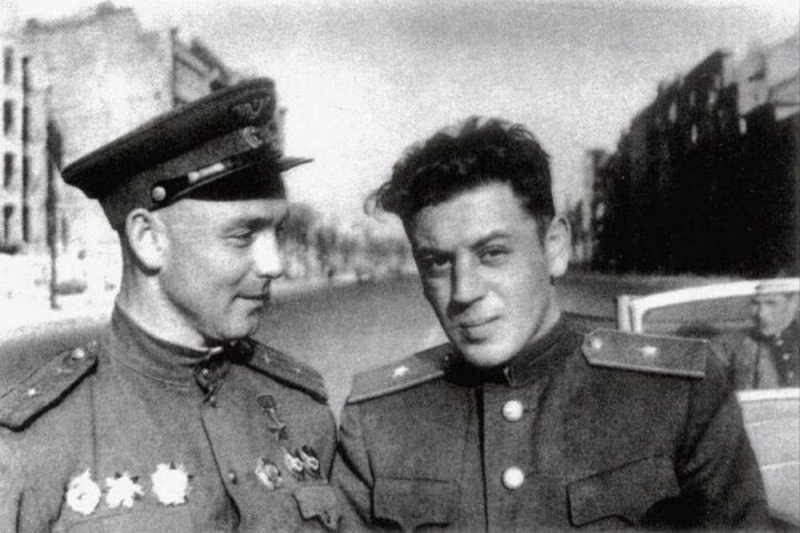
Photo: https://cdni.rbth.com/ -
One of the interesting facts about Joseph Stalin is that his purges killed many people. The Communist Parties fought for control after Lenin's passing. Stalin and two Russian MPs fought it out as the primary contenders. Stalin maintained his position of dominance during a brief power struggle, and he exiled his rivals for a protracted period. Stalin started the Great Purge, which eliminated politicians, generals, and even members of his army, to eliminate any residual threats. A bizarre fact about Joseph Stalin is that some historians estimate the number of deaths to be closer to a million, whilst others claim that the number is much higher.
Overall, according to some historians, Stalin was personally to blame for around 10 million fatalities, not counting those brought on by World War II, the several famines he started, as well as the Great Purge of 1930. For example, some historians believe that Stalin's Great Purge and subsequent starvation killed some 20 million people, and an even higher estimate places the death toll at 30 million! Given that the Soviets destroyed the majority of the documents about Stalin's purges and genocides, we will likely never know the exact scope of his atrocities, let alone the lowest estimate.

Photo: https://someinterestingfacts.net/ 
Photo: https://1.bp.blogspot.com/ -
Stalin, who practiced collectivization as well, converted numerous small farms into big state plantations. However, as a result of the farmers' disinterest in working, his strategy quickly failed. The amount of food they receive from their farms decreases over time since the majority is transferred to Russia. A large number of Ukrainian peasants perished from starvation as a result of this scheme, and those that protested were summarily executed by the Soviet Secret Police.
The Red Army put an end to armed peasant uprisings against segregation and collectivization that began in Ukraine, the northern Caucasus, southern Russia, and central Asia and reached a climax in March 1930. Stalin's article in response to the uprisings emphasized that collectivization was voluntary and placed the blame for any excesses and bloodshed on local leaders. Despite their long-standing friendship, Bukharin expressed alarm about these tactics because he thought they represented a return to Lenin's failed "war communism" strategy. He ran out of support inside the party by the middle of 1928 and was powerless to stop the reforms. Stalin dismissed him from the Politburo in November 1929.
Stalin killed approximately 4 million Ukrainians with this policy alone. He made matters worse by putting talented farmers into jails and extermination camps.
Photo: https://gdb.rferl.org/ 
Photo: https://images.newrepublic.com/ -
It is well known that Stalin was married twice, and both of his wives passed away young, the first from typhus and the second from suicide. Few people are aware, however, that this attractive and intelligent young guy had relationships with numerous other women and fathered a large number of children. Stalin traveled to modern-day Azerbaijan after the passing of his first wife and collaborated with the local communist organizations there. Here, Stalin first met Nadezhda Alliluyeva, the woman he later married in 1919. Stalin, though, is deeply troubled by the passing of his first wife. Even after having two children boy and a girl, with his new wife, Joseph and Nadezhda frequently fought.
Being a strong and well-respected communist allowed Stalin to develop into a pervasive promiscuous man who constantly interacted with female revolutionaries or occasionally the wives of other revolutionaries during his career. While many people tried to conceal their infidelity, Stalin was quite open about it. His wife was also aware of his infidelity, which naturally led to numerous arguments between the couple. In November 1932, Nadezhda Stalin committed herself after arguing with her husband about his infidelity during a group supper in the Kremlin, where Stalin was seen flirting with other ladies. This incident may have been brought on by her husband's infidelity.

Photo: http://foreignpolicyi.org/ 
Photo: https://cdn.shopify.com/ -
One of the interesting facts about Joseph Stalin is that he received an early warning about Hitler's invasion. Hitler signed a deal with the Soviet Union before to annexing Western and Southern Europe in order to stop Stalin from invading Germany. Hitler started to focus on Russia's vast expanses after capturing several European nations. Stalin started to get several alerts about Hitler's plans as he started to concentrate his soldiers at the Russian border. Stalin was warned by the British, French, and even his own Secret Police, but he ignored the warnings as untrue rumors.
Hitler was widely respected by Stalin, particularly for the way he used the Night of the Long Knives to remove rivals inside the Nazi Party. Stalin, however, understood the danger that fascism posed and worked to improve relations with Western Europe's liberal democracies.A mutual assistance agreement between the Soviet Union, France, and Czechoslovakia was signed in May 1935.
The Soviet government pushed Marxists-Leninists to join forces with other leftists as part of the popular front against fascism at the 7th Congress of the Communist International, which took place in July-August 1935. The Anti-Communist Treaty of 1936 was subsequently ratified by the anti-communist governments of Germany, fascist Italy, and Japan.
Hitler's primary focus in 1942 changed from achieving a decisive victory on the Eastern Front to capturing oil fields in the southern Soviet Union that were essential to a long-term German war effort. Stalin regarded this as a flanking maneuver in a fresh attempt to seize Moscow when the army noticed signs that Hitler would concentrate his efforts in the south.
Photo: https://russia-insider.com/ 
Photo: https://img.thedailybeast.com/ -
Stalin's health started to deteriorate in 1950 when he was more than 70 years old. Stalin had utter mistrust of them despite being treated by the best Soviet physicians; this mistrust only grew once the person suggested that he take a break for his health.
Stalin started taking lengthier vacations for health reasons, notably to the warmer parts of the southern Soviet Union, where he frequently stayed in one of his numerous villas scattered throughout the nation. Stalin didn't return to Moscow from a lengthy holiday in the south until March 1, 1953. Stalin suffered from a brain hemorrhage when his body was discovered semi-conscious on the bedroom floor by Stalin's agents that same day.
The majority of the greatest Soviet medical professionals were permitted to treat Stalin out of fear of upsetting him, with those Stalin sent home. Stalin was thus given the chance to live, but due to brain problems, he passed away on March 5. Although there are no official papers confirming it, many believed that Lavrentiy Beria had poisoned Stalin on behalf of British Intelligence (as Beria may have been paid for by British Intelligence) even though they did not formally accept the Soviet diagnosis.
On March 6, Stalin's passing was revealed. The body was embalmed and put on display for three days in Moscow's House of Unions. There were roughly 100 fatalities due to the size of the throng. Hundreds of thousands of people attended the funeral, which included the remains being laid to rest in Lenin's Mausoleum on Red Square on March 9. As the police became aware of those who were celebrating Stalin's death, there was an uptick in arrests for "anti-Soviet activity" throughout that month. Stalin's passing led to the establishment of an official time of mourning in China. At St. George, the Martyr in Holborn, London, a memorial service was also held in his honor.

Photo: https://s.hdnux.com/ 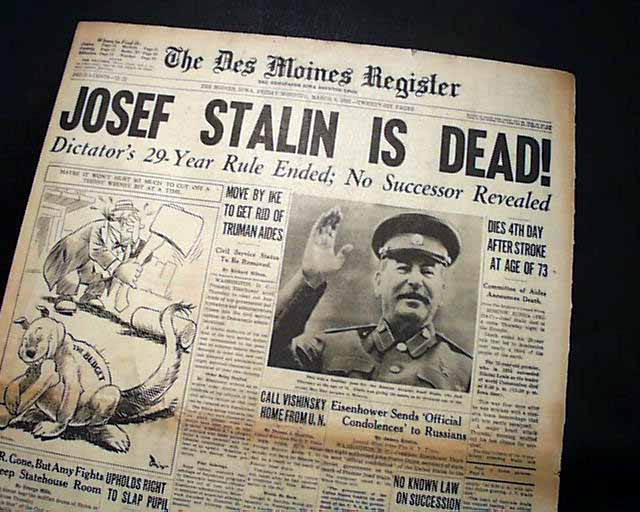
Photo: https://secure-images.rarenewspapers.com/ -
One of the interesting facts about Joseph Stalin was that he loved and hated Germany. World War I began in 1914 as a result of the murder of the Austrian heiress, Archduke Franz Ferdinand, by a Serbian nationalist. Emperor Russia will get involved in the conflict since it is a part of the Entente alliance, along with France and Great Britain.
The Russian people were soon enraged by the tsarist authority as a result of the war's tensions, and they resorted to political beliefs like communism, which ultimately resulted in the 1917 Russian Revolution. Observe ideology Stalin frequently spoke about how he had founded the Soviet Union with the German Empire as his political principles gained prominence via the German conflict.
But within a few decades, both Russia and Germany would be at war once more. Russia will once more overcome the Germans with the aid of Great Britain, France, and the United States. Stalin, however, stopped writing about his obligation to the Soviet government in response to German pressure. Since two generations of Germans rebelled against Russia, millions of Russians were massacred. Stalin, who was understandably irritated, wished Germany ill. For Russia to never rise again, he wanted it to be destroyed and defeated. This contributed to the Cold War and the creation of East and West Germany following World War II.

Photo: https://www.greanvillepost.com/ 
Photo: https://images.fineartamerica.com/ -
Stalin started a number of reforms as soon as he took office in 1927. These changes created the groundwork for Stalin's own style of communism, Stalinism, despite the fact that they were intended to be a continuation of Lenin's own brand of communism, Leninism.
Stalinism was initially focused at boosting Soviet industry by enacting measures like collective farming and industrial quotas, despite being economically identical to Leninism. Stalinism will gradually start to implement cultural reforms as well. For instance, the most well-known of them was Lenin's use of secret operatives to monitor the purging of non-communists and counter-revolutionaries.
In addition, Stalin would start to create a personality cult around both Lenin and himself, viewing them as "men of the people" in a manner akin to Julius Caesar and his Caesarism. Stalinism will be abolished in the Soviet Union and all other communist nations after his death in 1953. Even yet, other forms of communism, particularly Korean Jucheism, would be greatly influenced by Stalinism.
Leninism gave rise to Stalinism, whereby Stalin did not coin the phrase "Marx-Leninism-Stalinism," but he did permit others to do so. He first conceived of this concept in December 1924 and explored it further in his writings from 1925 to 1926. According to Stalin's theory, socialism could be implemented in Russia, but its ultimate triumph there could not be guaranteed due to the fear of capitalist intervention. For this reason, he continues to subscribe to the Leninist viewpoint that a global revolution is still necessary to guarantee socialism's eventual triumph.

Photo: http://cdn.artwallpaperhi.com/ 
Photo: https://cdn.thinglink.me/ -
One of the interesting facts about Joseph Stalin is that Lenin despised him. Following the 1917 Russian Revolution, Lenin's Bolsheviks took control of the country, and many of Lenin's closest associates were granted key positions in the communist party and the new Soviet government.
Due to his Georgian (i.e., non-Russian) ancestry, Stalin, one of the most vocal Bolsheviks, accepted the position of People's Commissar of Peoples. In this capacity, Stalin would transform from an obscure but influential member of the Bolsheviks into a well-liked and even more influential Bolsheviks with the support of numerous national minorities in the Soviet Union as well as numerous ethnic Russians!Lenin started having strokes in 1922, and one of them crippled him. Lenin suggested Stalin as his replacement after he was unable to carry out his duties as the Communist Party's general secretary. Lenin started to disapprove of Stalin's actions when he took over as general secretary and thought he was unqualified to rule. He instructed the person in charge of allocating employees not to offer Stalin any new jobs before he passed away.
This strategy appeared to have the potential to succeed. Lenin erred, though, because Stalin was also in charge of providing employment. As one may expect, after Lenin died in 1924, Stalin ignored his commands.
Photo: https://cdni.rbth.com/ 
Photo: https://images5.alphacoders.com/ -
One of the facts about Joseph Stalin was that the death of his first wife deeply troubled him. Stalin and Alexander Svanidze, a fellow communist from Georgia, quickly grew close friends and eventually became unbreakable. Stalin frequently visited the Svanidze family as a personal friend, and he grew close to Ekaterine, Alexander's sister, whom he jokingly referred to as "Kato." Alexander and Joseph's bond was further cemented when the pair later became romantically involved.
Joseph would write fondly of Kato, describing her as the woman who “melted his heart”, with Kato also writing fondly of the scruffy young Stalin who was best friends with her brother. In the summer of 1906, Kato fell pregnant with Stalin’s child, causing him to propose to Kato. He proposed to Kato when she became pregnant with his child in the summer of 1906. Kato, a devoutly spiritual woman, insisted that they wed in a church, and a Stalinist atheist consented.
Kato developed typhus or tuberculosis less than nine months after giving birth to her son Yakov. She passed away on November 22, 1907, as a result. Stalin, who had been only a young man, would be greatly affected by her death. Funny suddenly becomes resentful, irate, and distant, even refusing to speak to Alexander, his close friend, and former brother-in-law.

Photo: https://preview.redd.it/ 
Photo: https://cdni.rbth.com/ -
After joining the communist party, Stalin concluded that in order to successfully rise up, depose the capitalists, and most crucially, maintain their rule, they required a lot of money. Stalin started organizing massive defense actions for important companies and mines in and around Baku for that purpose in 1905, taking special care to protect any workers in the process.
Although successful, the communists depleted these monies more quickly than Stalin could replace them. Stalin would return to Tbilisi in 1907 with a clever plan and execute a bank robbery, providing the communists with a massive cash infusion.
Stalin would attack a strongly guarded carriage carrying enormous sums of money to the Imperial Bank in Tbilisi on June 26, 1907, using weapons and natural explosives, together with a group of communists. Stalin's group would have killed roughly 40 people, but they would all survive unhurt and make off with 241,000 rubles in cash, which the communists would use to fund the strikes and other uprisings in the following months years. Stalin and his family relocated to Baku following the robbery. As they voted to expel him from the RSDLP, the Mensheviks confronted Stalin about the heist, but he disregarded them.

Photo: https://miro.medium.com/ 
Photo: http://d187qskirji7ti.cloudfront.net/ -
Keke, Stalin's mother, was a devout Christian when she was a child. A young Stalin would have been quite close to his mother and highly pious, as the two shared a home with a Georgian Orthodox priest. The Georgian Orthodox priest obtained Stalin's enrollment in the neighborhood Gori Religious School after observing the young man's dedication. Stalin earned good grades despite being a bit of a troublemaker, particularly in the arts and drama.
He was given a scholarship that would allow him to study at a lesser cost to become a priest, and in August 1894 he was able to earn a spot at the Tbilisi Spiritual Seminary. Stalin continued to do well academically after starting school at the age of 16, garnering the respect of his teachers and peers. There, he joined 600 novice priests and excelled academically.
Stalin lost interest in both becoming a priest and in his studies as he aged, though. Stalin's grades started to suffer, and he started acting out in class and was frequently put in jail for it. He declared himself to be an atheist, did not pray, and would not wear hats to the monks, according to the seminary notebook. Stalin gave up his faith and lived an atheist lifestyle for the remainder of his life after dropping out of school and joining the communist party in 1901.
Photo: http://www.excitingg.com/ 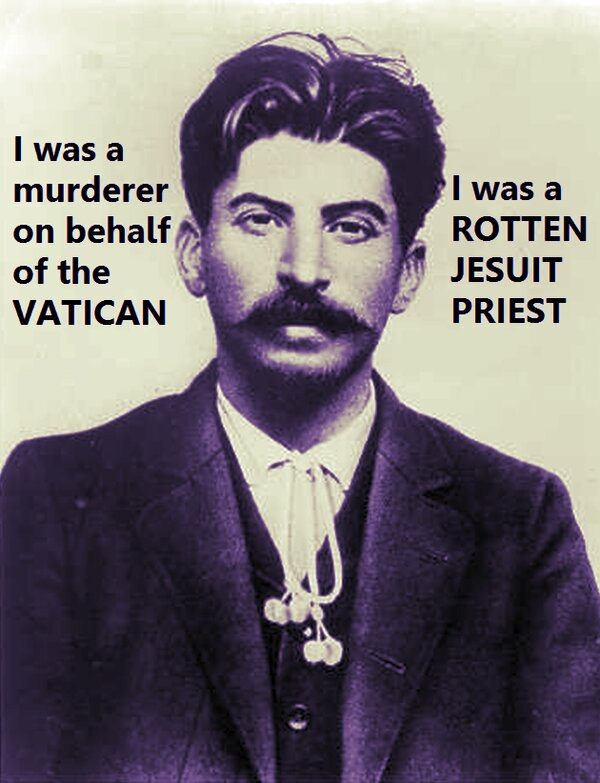
Photo: https://3.bp.blogspot.com/




























